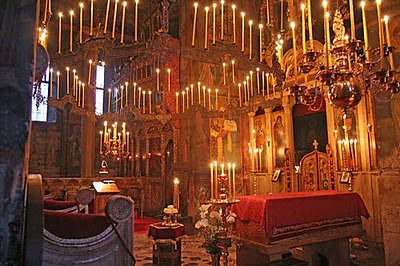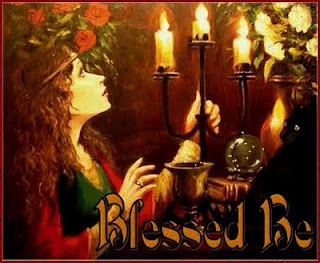 |
Spiritual but not Religious People
Attracted to Paganism
In the past, most new Buddhists in the West have come to the Dharma from a
Judeo-Christian, or secularized Judeo-Christian background. But there now
seems to be an increasing number of younger people coming into Buddhism via Paganism,
often melding pagan festivals, rituals and art-forms with Buddhist philosophy.
The Buddhist celebration of the enlightened feminine (especially Tara) is particularly
popular.
The rapid modern growth of paganism is part
of the 'Spiritual but not Religious' movement, where young people are trying
to escape the bleak mechanistic materialist worldview of scientism, but can find no
spirituality in the samsaric religions, which are increasingly dominated by hatred, bigotry, extremism and idiocy.
This process of disintegration is a vicious
downward spiral. As the formerly mainstream religions decline, so they become
vulnerable to being taken over by cliques of extremists, which makes them even less
appealing to liberal-minded youth. Paganism, with its ancient numinous festivals and evocative symbolism, offers an escape from the soulless, stressed-out,
dehumanised, over-regulated and proceduralised existence which is modern urban life.
Paganism particularly venerates the feminine aspects of spirituality. In contrast, there
is little or no place for the divine feminine in standard Abrahamic
monotheism.
However, paganism lacks the philosophical background needed to challenge materialism, and this may
be why many pagans are eventually drawn to Buddhist teachings.
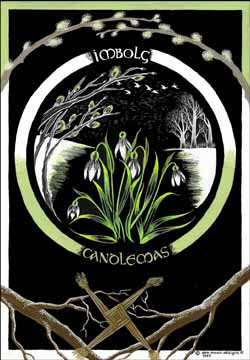 |
| Candlemas Pagan Origins |
Christianization
When Christianity came to the Celtic lands, it took over many of the Pagan festivals and
Christianized them. This was far more acceptable to the people than banning them, as the
Puritans were to do to all pagan-origin festivals many centuries later.
Its always easier for new religions to work with the existing culture than against it, a
policy also pursued by Buddhism in its spread throughout Asia.
Buddhist interpretations
Now that Buddhism is establishing itself in Western Europe, there is a movement to
reinterpret some of these numinous Pagan festivals from a Buddhist perspective.
The
FWBO has a program of
honoring the Five female Buddhas, on the day and time of the year associated with each
of them. The cycle begins with the Summer Solstice and female Buddha Mamaki.
The Autumn Equinox, is a ceremony dedicated to Pandaravasini, the female Buddha of the Western direction
associated with dusk and the wisdom of uniqueness.
Later in the year it is the turn of Samayatara, the female Buddha of the Northern direction
associated with midnight and the wisdom of action (Halloween/Samhain); and Akasadhatesvari, the female
Buddha at the centre of the Mandala beyond time and space. She is associated with the
ineffable wisdom of the Transcendental. Her ceremony takes place at the time of the Winter
Solstice.
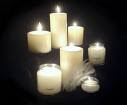
Candlemas - Festival of Offering Lights to the Goddess
The next festival is Candlemas,
also known as Imbolc,
which in pagan times was an offering of Lights to the Goddess in the aspect of
Brigit or Bride. This ancient festival takes place on February 2nd and marks the mid point of
winter, half way between the winter solstice (shortest day) and the spring equinox.
Of course the idea of a Goddess was
anathema to the patriarchal, misogynistic ancient church, and Brigid, who was too
popular to get rid of, was demoted from Goddess to Saint. The idea of honoring the
feminine was turned on its head, and the festival became the Purification of the Virgin, to
remind women of their ritual uncleanness.
However, if we return to the original pagan
intention, we can see that Candlemas,
although now almost
abandoned by the Christian churches, has potential for adaptation by Buddhists.
Buddhists honor many female Buddhas, for example Tara
and Guan Yin, and the
lighting of a candle or an oil lamp represents the light of wisdom illuminating the
darkness of ignorance.
With
lights brightly shining
Abolishing this gloom
I adore the Enlightened One,
The Light of the three worlds.
- Wiki

Offerings of lights are said to have many beneficial effects.
And so Candlemas, already
resonant with ancient evocative associations with divine light, is easily adaptable to
Buddhist practice.

Western
holidays from a Buddhist perspective.
On this blog I have also suggested how Halloween, Christmas,
Summer Solstice and New Year
can be given Buddhist interpretations.
No danger
of 'mixing'
Such adoptions of pagan festivals do not involve 'mixing' of the dharma with other doctrines,
because there is no impact on the philosophical foundations of Buddhism such as the Four Seals. Nor is
there any impact on the form of practice. The celebration of these occasions is simply
performing Buddhist rituals in the context of Celtic cultural traditions.
Buddhism is not itself a culture. It is transcultural - valid for all sentient beings, in all
places, at all times.
Spiritual But Not Religious
If Buddhism wishes to attract young people,
it needs to engage more with the 'Spiritual
but not Religious' zeitgeist, of which paganism, the New Age movement and the various
feminine spiritualities are manifestations.
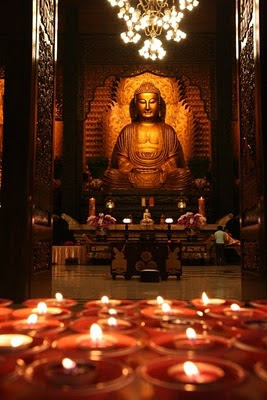 |
| Light of the World |
RELATED ARTICLES:
Mysterians,
Mysterianism and the Mystery of the Mind
Mysticism
Why
Beauty Matters
Honoring
the Feminine in Buddhism
Cauldron,
Chalice and Grail Symbolism in Buddhism and Celtic Wicca
Numinous
Symbolism - Pagan, Buddhist and Christian
Celtic
Buddhism - Buddhism in pre-Christian Britain
Celtic
and Buddhist symbolism - triskelions, triskeles
Buddhist
Halloween
Can
Buddhists Celebrate Christmas?
